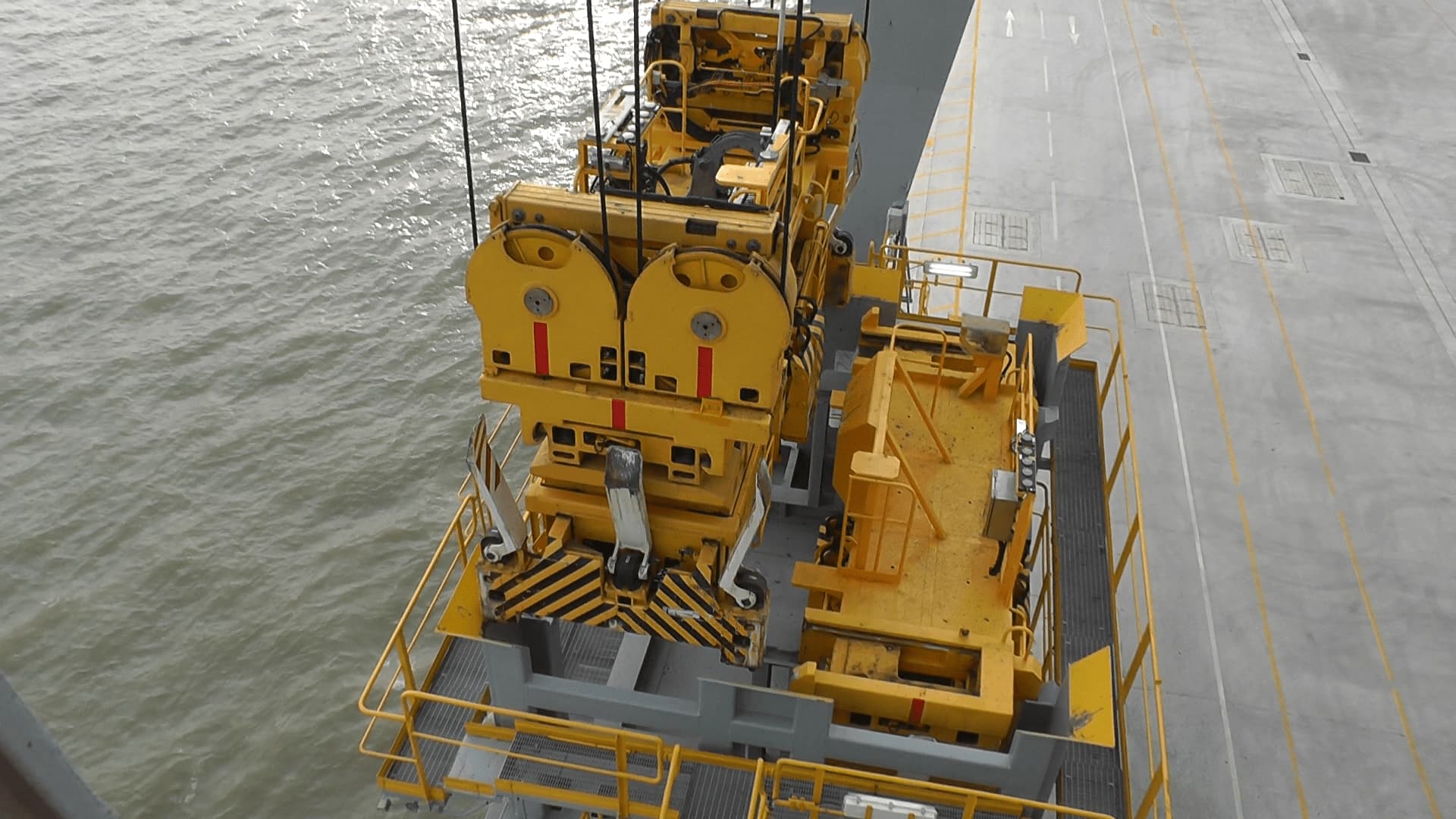Key Takeaways
- It allows crane operators to lift more containers per cycle.
- Crane operators can still operate in tandem when accommodating mega vessels.
- Less energy is used when in a tandem operation on a single hoist crane
- With the correct planning tandem operations can improve quayside efficiency
Over the years, container handling has evolved from single container lifts to twin container lifts but now a new normal is approaching, tandem lifting – but what is tandem lifting?
In recent years, container terminals are accommodating larger container vessels, which has led to growing pressures on ports to load and unload containers more productively. This is where tandem lifting comes into the field of play. Tandem means ‘side by side’ as opposed to ‘end by end’ – in this case, tandem lifting is a crane hoisting two container spreaders at the same time. Tandem lifting has opened a new avenue to improving port productivity and efficiency.
Tandem for mega vessel ports & terminals
Many ports and terminal operators think tandem lifting requires an investment in a dual hoist crane as well as a headblock but this simply isn’t true. Tandem headblocks can be used on single hoist cranes, which weigh much less and cost significantly less than a dual hoist crane.
In addition, the height between the sheave and the bottom of RAM 2940 ship to shore spreader means terminals can accommodate large mega vessels without the risk of having equipment that is too low. The height of the SingFlex headblock and container spreaders attached is 3 metres, which means crane operators can reach new heights whilst operating in tandem.
More lifts per crane cycle
As the operator now has two spreaders attached to the crane, the operator has the power to lift more containers per cycle. If we consider the SingFlex ship to shore headblock, in tandem mode the crane operator can handle 2 x 20ft, 40ft, 45ft ISO containers or 4 x 20ft containers, boosting container handling productivity.
Added operational flexibility
Though the SingFlex does not constrain the crane operator from using two spreaders, they have the option to choose. They can switch from single to tandem (& vice versa) using the purpose-built docking station within 46 seconds. Moreover, the docking station does not need any manual intervention from stevedores to avoid any element of danger.
When in tandem mode, crane operators can be challenged with trucks parked further away from each other (their intended location), a container may be lower than its tandem container or other reasons. These challenges can be frustrating and take away the shine from your tandem lifting. This is why it is important to have a tandem headblock that is flexible. The SingFlex headblock can adjust the gap between containers, longitudinal offset, skew and height adjustment, allowing your container handling to flow.
Less energy demand
Other terminals are using tandem lifting as means to make their operations more sustainable. For instance, in single spreader mode the crane operator can move 50 containers in 50 moves, whereas in tandem mode, the crane can move 100 boxes in 50 moves. Less moves means less energy needed. This adds a further benefit of operational costs being lower due to less energy consumed.
Frequently Asked Questions
Your Title Goes Here
Your content goes here. Edit or remove this text inline or in the module Content settings. You can also style every aspect of this content in the module Design settings and even apply custom CSS to this text in the module Advanced settings.
How Many Containers Can Be Lifted in Tandem Mode?
The number of containers lifted in tandem mode depends on the equipment used. With the SingFlex ship-to-shore headblock, a crane operator can handle 2 x 20ft, 40ft, or 45ft ISO containers, or 4 x 20ft containers, significantly boosting container handling productivity.
Can Operators Switch Between Single and Tandem Mode Easily?
Yes, the SingFlex headblock allows crane operators to switch from single to tandem mode (and vice versa) using a purpose-built docking station within 46 seconds, with no manual intervention required, ensuring operational flexibility. Read our article on ‘The transition between Single and Tandem Container Lifting‘
How Does the SingFlex Headblock Address Tandem Lifting Challenges?
The SingFlex headblock is flexible and can adjust the gap between containers, longitudinal offset, skew, and height adjustment. This adaptability helps address challenges such as containers parked at varying distances and heights. Watch our video on the flexibility of tandem lifting with SingFlex.
Why choose a ship to shore headblock over a dual hoist crane?
Single hoist operations excel in cost efficiency and adaptability compared to dual hoist operations. They demand lower capital investment by handling multiple containers with one crane, reducing equipment expenses. Furthermore, single hoist cranes swiftly alternate between single and tandem modes, elevating overall operational efficiency. Read our article on the differences between single and dual hoist tandem operations.


